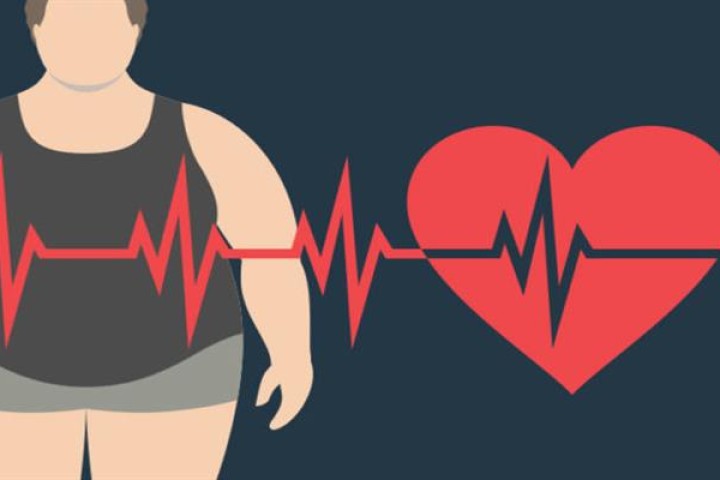Obesity: How much to blame the obesogenic environment?

Obesity is a critical problem. Worldwide more than 2 billion adults and children suffer from health complications because of being overweight, according to one study reported in the New England Journal of Medicine (2017).
The prevalence of obesity almost tripled from 1975 to 2016 globally as claimed by the WHO, and at least 2.8 million people die each year due to overweight or obesity related causes. Overweight and obesity cause more deaths than underweight, and is now predominant in low- and middle-income countries.
People maintain strict diets, do extensive exercise, some even surgically remove abdominal fats to get rid of obesity; but not everyone achieves expected results. Diet and lifestyle, bad genes, gut bacteria and other factors are responsible for obesity according to different sources. Often we blame obese people for not changing lifestyles or doing enough diet control. But why do dedicated people also fail? The answer is behaviour and this is influenced by complex factors that often originate external to the obese individual. Consciously, we may want to make healthy decisions, but the surrounding environment can reinforce both positive and negative behaviours. Watching our favourite models eat junk food and consume unhealthy beverages creates a desire to consume those as well. Attractive advertising offers easy access to unhealthy food in our surroundings and works against maintaining good habits. Rather than blaming individuals for gaining weight, we have to take a closer look at this environment. Our surrounding environment has become an obesogenic environment.
The obesogenic environment refers to an environment that promotes gaining weight and one that is not conductive to weight loss within the home or workplace (Swinburn et, al, 1999). A number of elements foster the growth of an obesogenic environment:
• Home: Children develop food preferences from what they eat at home. If they eat healthy food there, then they are less likely to crave fast food. Parents’ nutritional knowledge, awareness of healthy choices, basic cooking skills, and the types of foods available at home from childhood all effect eating behaviour. It takes a longer time to prepare meals than to buy convenient foods. Working parents may have less time for meal preparation and prefer fast food as an easy solution.
• Workplace: Sometimes workplaces have easy access to unhealthy foods and limited options for healthier choices. Workplaces that offer healthy foods in the company cafeteria can improve diet quality and staff productivity.
• School: One can easily find fast food shops and unhealthy foods in vending machines near to schools. School canteens also may not provide enough healthy food. Busy parents may not provide healthy snacks for their children, who may not have playgrounds and little chance for exercise.
• Peer and social influences: People follow peers and mimic their friends’ food choices, without realizing they are doing so. If friends eat healthy food, others are also motivated to.
• Market: The presence or lack of nearby supermarkets, convenience stores and fast food restaurants are linked to lower quality diets and an increased risk of obesity. Instant foods are mostly packed with salt and flavour enhancers like monosodium glutamate.
• Restaurant: Eating in restaurants regularly is not wise. Most restaurants’ portion size is often two or three times bigger than the recommended serving size. In 2004, a documentary “Super-Size Me” demonstrated how a man could gain 25 pounds in weight from consuming only fast food for all meals for just a month. Fast food shops try to attract customers by offering creative entertainments. Children learn to associate unhealthy ‘junk food’with rewards and fun.
• Other public places: Streets and public places like stations and cinemas are sometimes dominated by shops selling junk foods and sugary drinks, which are calorie dense foods.
• Food marketing and advertisement: Rudd Center analysis in 2017 documented that $14 billion are spent per year by food, beverage and restaurant companies on advertising in the US and more than 80% of these promote fast food, sugary drinks and unhealthy snacks. Food marketers communicate through cell phones, video games, and social media to target youth. Moreover, they sponsor educational materials and contests that target schools. Catchy phrases, messages, slogans, and attractive colours in the advertisement create emotional attachment.
• Govt. policies and regulations: Government policies and regulations on the availability of healthy food are a vital issue. Restricting the marketing of unhealthy foods will benefit people. More than 35 nations worldwide, including the USA, have adopted taxes on sugary drinks. Some of the voluntary policiesare not very effective. Self-regulation and pledges do not provide for adequate enforcement.
Obesity is increasing alarmingly, and the food environment has a vital influence on this trend. Solutions to modify the obesogenic environment are necessary to control this multifactorial disease.
Recommendations:
• Provide incentives to store owners to supply healthy foods.
• Reduce incentives of food industries who produce unhealthy processed foods.
• Restrict marketing of foods high in sugars, salt and fats.
• Promoteadvertisement of healthy food and increase health promotion campaigns through social media or mobile applications.
• Ensure healthy and nutritious choices are available and affordable for all.
• Ensure basic understanding of food labels, serving size and nutritional value among mass people and review portion sizes. Food labelling in restaurants helps reduce calorie intake.
• In France, the five-color NutriScore label on food store products was found to be the most effective nutritional labelling system.
• The school environment should be health promoting and nutrition education should be included in the core curriculum. Schools, sports facilities and events should be free of unhealthy foods and drinks and there should be access to portable water. In 1980, Quebec in Canada passed a law that prohibited junk food advertising to children younger than 13, resulting in one of the lowest rates of childhood obesity in the country.
• Enjoy mindful eating, which iswithout any distractions like watching TV, playing video games,
• Create computer models to interpret human interaction with causes of obesity and use those to design solutions,
• Ensure infrastructure and opportunities for physical activities.
The writer is a public health professional and freelance writer. E-mail: [email protected]

